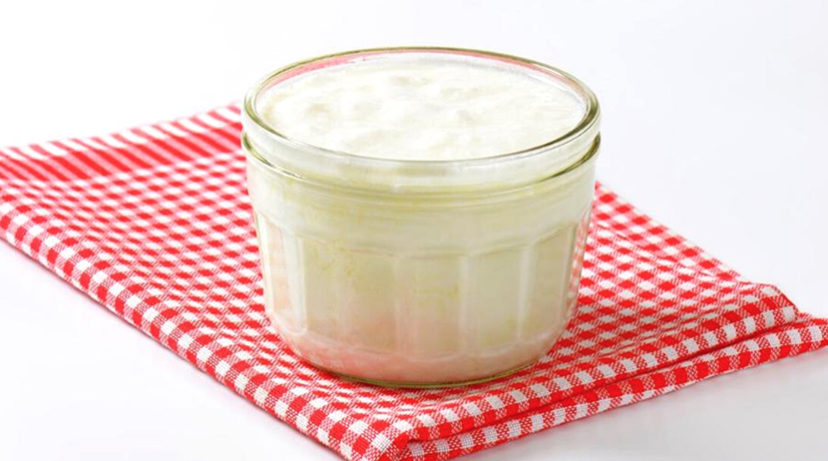
You can choose reliable open milk for making yogurt. If you can't find reliable clear milk, you can use a glass bottle of pasteurized daily milk. You can choose cow's and goat's milk. Yogurt fermented with goat's milk is somewhat liquid compared to yogurt fermented with cow's milk, and it is more difficult to stick the yogurt. Therefore, if you are going to ferment yoghurt from goat's milk, it would be better to ferment it in the oven.
The yogurt chosen for yeast selection should be non-sour home-made yogurt. The yogurt we will use as yeast must be at room temperature.
MATERIALS
1 liter milk
1 tablespoon of yogurt (at room temperature)
FABRICATION
If you bought the milk in clear (i.e. raw) form, strain the milk first and boil it.
Turn off the heat three minutes after the boiling starts.
For those who will use pasteurized daily milk, heating only will suffice as the milk is already heat-treated.
The milk is ready to ferment when it is warm until we can hold it for 10 seconds when we touch it with our pinky finger.
Take a few tablespoons of the fermented milk into the room temperature yeast yoghurt, mix it roughly and add this mixture to the milk and mix.
In this way, you can leave the milk to ferment in the pot where it boils, and you can ferment the milk-yeast mixture by taking it into a glass jar or dividing it into jars.
After adding yeast, close the lid of our pot or jar, wrap it in kitchen linens, put it in a warm place and leave it to ferment for 4-5 hours without moving it.
For those who want to leaven in the oven, leave the lids of the pot or jar open. Turn the oven on and off for 3-4 minutes at 40-50 °C beforehand. Place the fermented milk with the lids open in the warm oven and leave it to ferment for 4-5 hours. When the fermentation is finished, put the yogurt in the refrigerator. Start consuming after 24 hours.
NOTES